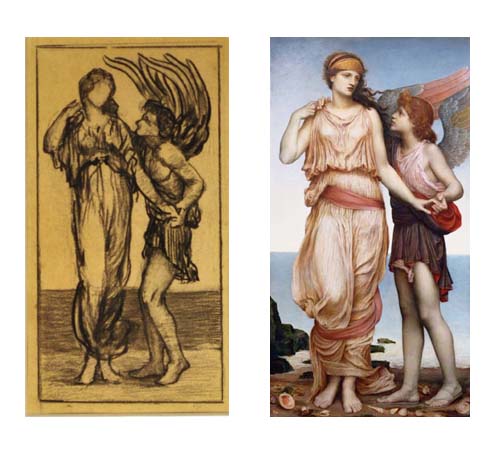The theme of love is one which Evelyn De Morgan was drawn to repeatedly over her 50-year career as a professional artist.
This picture depicts Venus, the Roman Goddess of beauty on the left, and Cupid, the Roman God of Love, on the right. Venus was believed to have sprung from the foam on the sea which is hinted at in the artists composition and use of shells on the shore. These shells also symbolise fertility and sexual potency.
Evelyn De Morgan trained at the Slade School of Art from 1875 and produced this beautiful canvas shortly after her time there and exhibited this piece at the avant-garde Grosvenor Gallery in London. Stylistically, De Morgan has adhered to the popular Neo-Classical and Aesthetic art movements of the time, which advocated mythological subjects and beautiful pictures, devoid of meaning.
Evelyn has imbued her canvas with a subtle meaning though, as Venus is bound by her dress whilst Cupid is free with wings positioned as though he might take flight. De Morgan is hinting at love being free from beauty, an ethereal human experience which is not bound to materiality. This is a theme she explores in many canvases, often juxtaposing love or material wealth with death, to show the transience of human existence.
During the planning of this composition, she has amended Cupid’s wings to achieve a balance of the forms. The original composition can be seen in this sketch.







